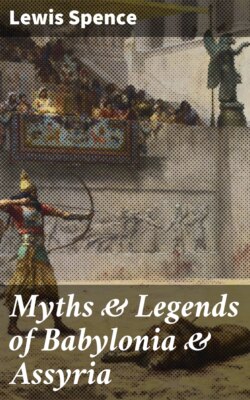Читать книгу Myths & Legends of Babylonia & Assyria - Lewis Spence - Страница 32
На сайте Литреса книга снята с продажи.
Cuneiform Writing
ОглавлениеThe manner in which the ancient cuneiform writing of Babylonia and Assyria was deciphered and restored to the world of science and letters may be regarded as a great triumph of human reason. The name 'cuneiform' is most appropriate, for each character or sign is composed of a wedge or combination of wedges. It is written, as most Oriental languages, from left to right. The cuneiform script was first noticed by a European at such a relatively early period as the year A.D. 1470, when Josaphat Barbaro, a Venetian traveller, observed it cut on the platform of Rachmet in Persia. Another Italian, Pietro della Valle, passing that way in 1621, copied a few of the signs, which he sent back to Italy, and Sir John Chardin accurately reproduced an inscription found at Persepolis in 1711. It was obvious that three separate languages were written in this script, and these have since been found to be Persian, Babylonian, and Susian. In 1765 Niebuhr visited Persepolis, and in less than a month copied all the texts there, which were then ready for decipherment. Returning to Denmark he occupied himself with studying what he had set down at Persepolis, and divided the smaller inscriptions into three classes, which he described as Classes I, II, and III instead of into three languages. Discovering that Class I embraced only forty-two signs, he set these in order, and but little subsequent addition has had to be made to them. Deciding that the language of the signs was written in alphabetic characters, he found himself obliged to call a halt. But two other scholars were more fortunate than he. Tychsen hit upon a certain diagonal sign as that employed to separate words, and correctly identified the alphabetic signs for 'a,' 'd,' 'u,' and 's.' Hunter of Copenhagen was more careful to verify his historical data than Tychsen had been, and was able to identify distinctly the authors of the inscriptions before him. He, too, independently identified the oblique wedge as a separative of words, and hit upon the significance of the sign for the letter 'b.' But after these achievements it seemed as if little more could be done. It must be remembered that up to this time no such assistance was vouchsafed the searchers as in the case of the Egyptian hieroglyphs, where a Greek inscription had been found side by side with an Egyptian one.
